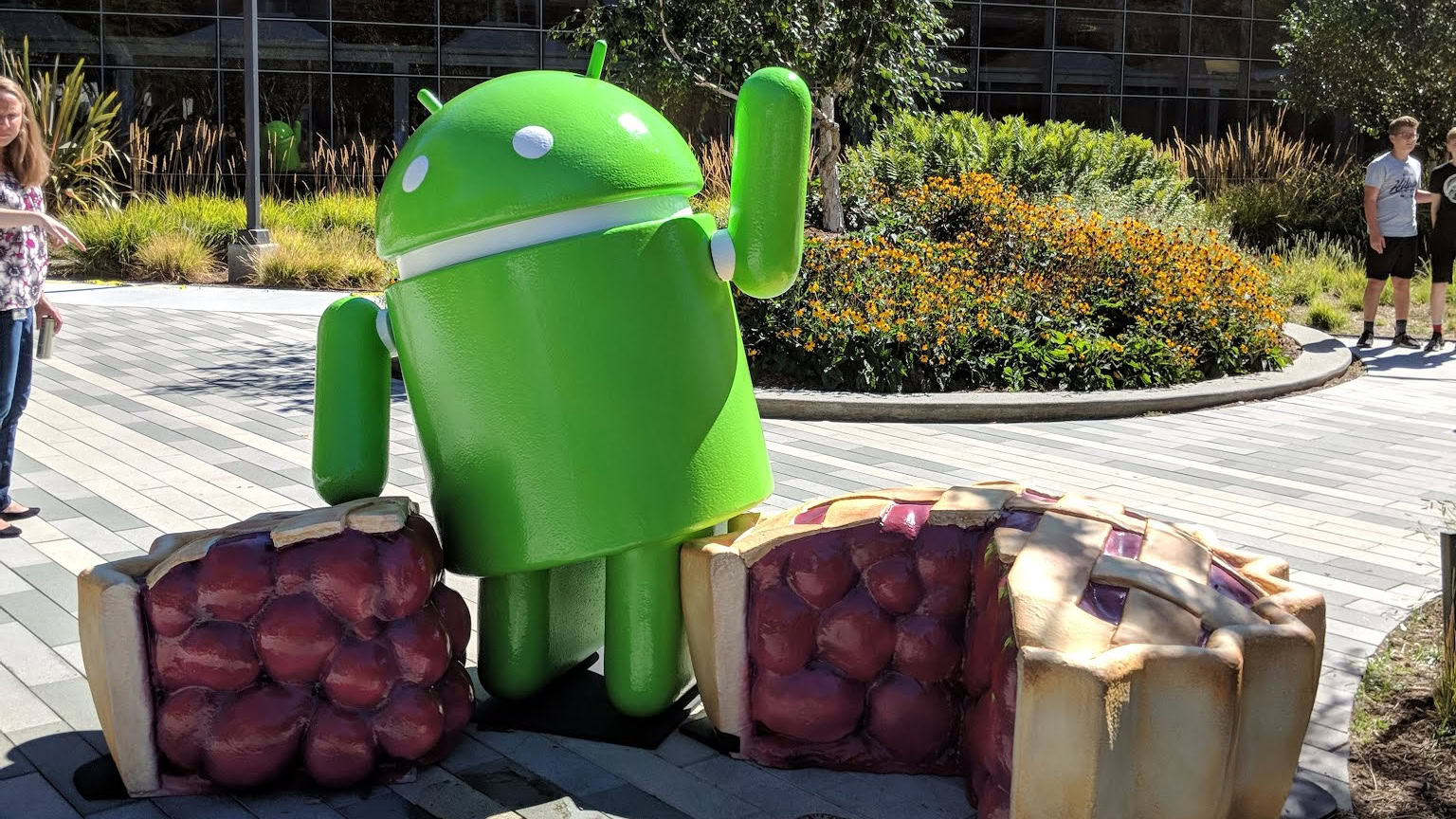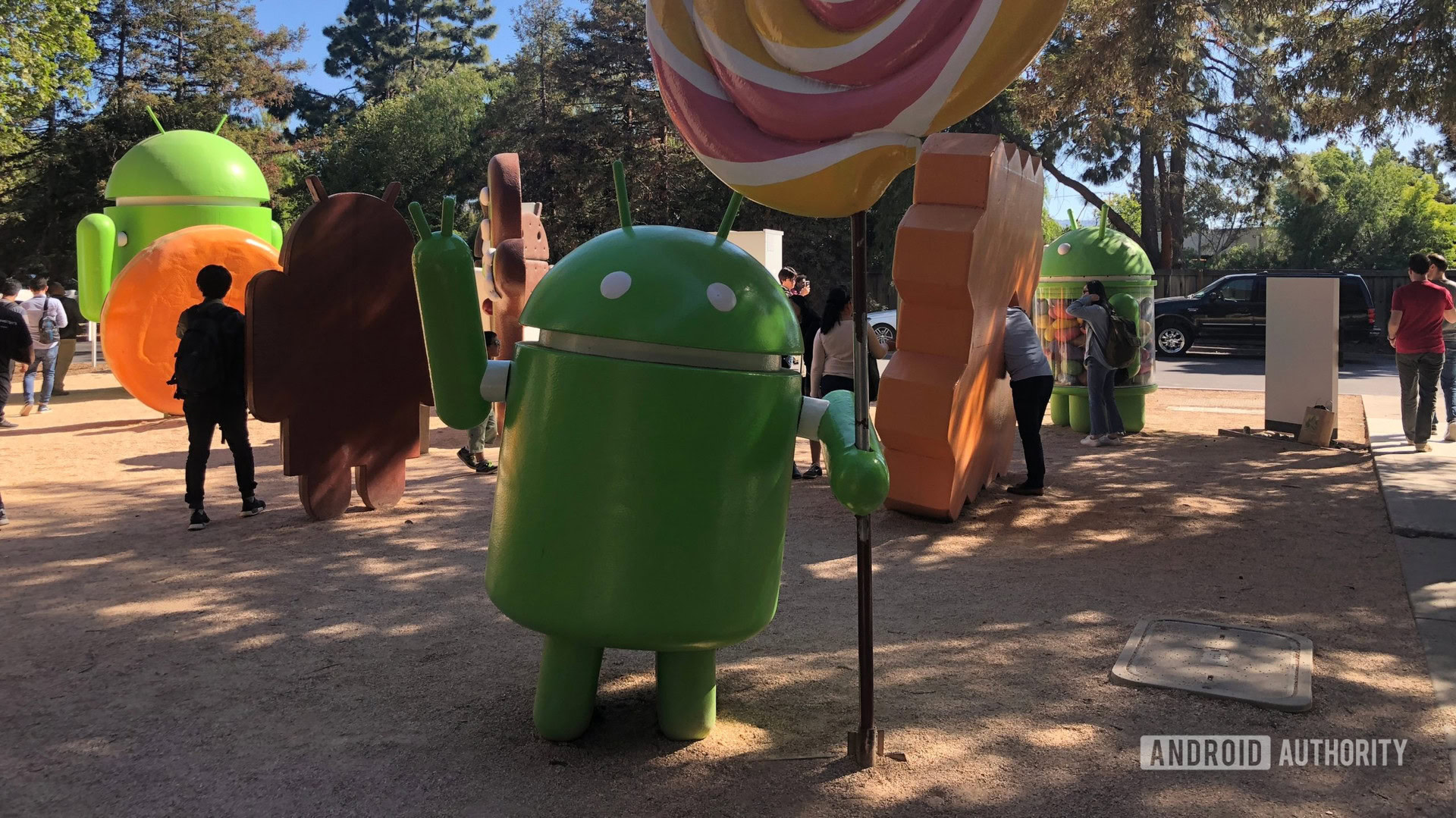Affiliate links on Android Authority may earn us a commission. Learn more.
The Android lawn statues have disappeared from Google HQ, but here's why

- The Android statues within Google’s Mountain View park are all gone.
- The statues represented all of Android’s releases up to Android 10, with Android 11 and Android 12 getting virtual statues.
- A source has confirmed the removal but noted that they’re being repaired and relocated.
Update: March 22, 2022 (1:30 AM ET): A source has confirmed the removal of the Android lawn statues to Android Authority, while also providing a reason for the decision.
“We removed the Android lawn statues from their prior location due to Google’s planned redevelopment of the Landings site in Mountain View,” the source told us. “The statues are being repaired and held in storage until they find a new home in our Mountain View campus.”
The source further stated that several statues have already been relocated and that Google plans to display the remaining statues around the Mountain View campus in the future.
Original article: March 18, 2022 (12:05 PM ET): In the early days of Android, outside of Building 44 at Google’s Mountain View headquarters, you would find multiple statues dedicated to the Android operating system. In the image above, you can see one of them, which represents Android 9 Pie. At the height, there were 18 statues altogether.
Recently, Google moved the statues away from Building 44 and to a small park outside the visitor’s center. Now, though, the Android statues are gone completely. At some point in the past few weeks, someone — we assume Google — moved all the statues to an undisclosed location.
We reached out to Google to find out what happened, but haven’t heard a response back.
‘Just a dirt patch’

Over the past two years, due to the COVID-19 pandemic, Google’s campus has been sparsely occupied. The visitor’s center nearby the park that used to hold the Android statues has been closed for a long time. From 2020 to a few weeks ago, visitors to the park have reported the statues looking pretty bad.
“I was expecting a treat and was met with desolation and ruin,” wrote one reviewer after paying a visit three weeks ago. “The whole area seems abandoned and the merchandise store looks from the outside like those post-apocalyptic stores you see in videogames and movies.”
Reports say the park is now totally devoid of any Android statues.
Now, though, the park appears to be completely devoid of Android statues at all. “All statues have been removed,” wrote one reviewer. “The park is just empty.” Meanwhile, another reviewer says, “No more statues at all. They removed them and there’s no signage saying if they’ll come back or not.”
“It’s a barren wasteland. All statues have been removed — just a dirt patch,” said another.
What happened there?
Is it time for a refresh for the Android statues? Or are they gone for good?

It is very possible Google removed the statues to give them some repairs. Reviews of the site over the past two years mention how shabby most of the statues looked. Perhaps Google is giving them some TLC?
Interestingly, Google I/O 2022 will actually have some in-person attendance this year. Google will hold its keynote event at the Shoreline Amphitheatre to a select audience. It’s very possible Google is readying a fun re-opening of the Android statue park to coincide with this somewhat-back-to-normal event.
However, Google also hasn’t made a physical statue for the park in years. Android 11 and Android 12 were stuck with virtual statues. Maybe Google is moving on from the whole idea of having statues at all and we won’t see them again?
Until Google responds to our query, we’ll just have to wait and hope that this major part of Android history isn’t gone for good.